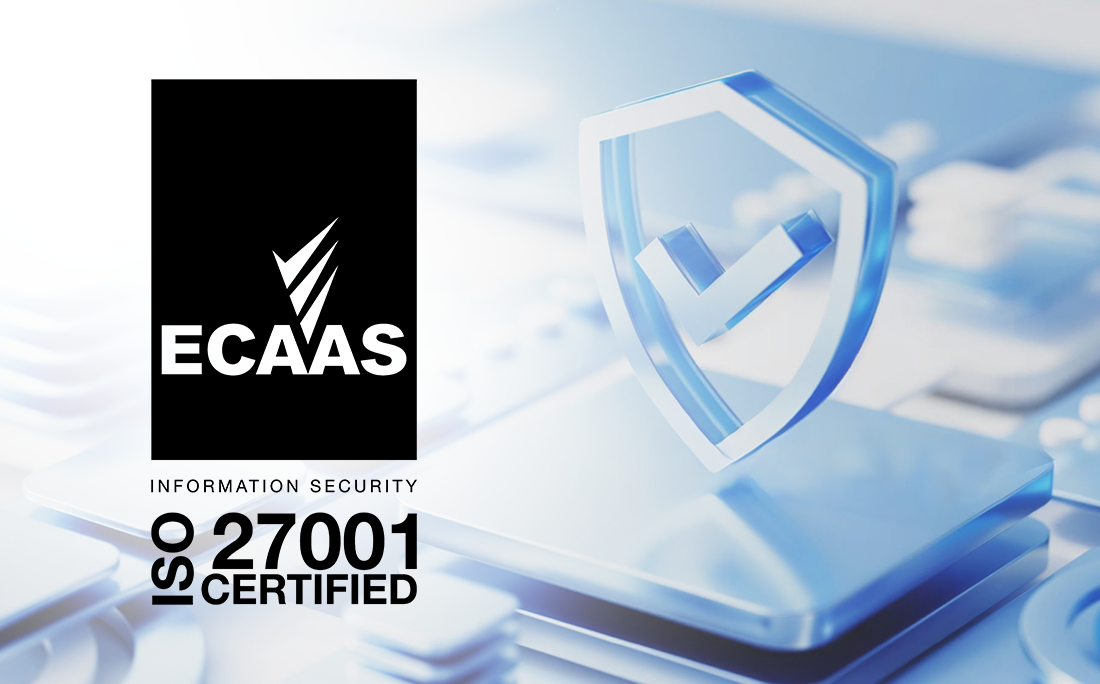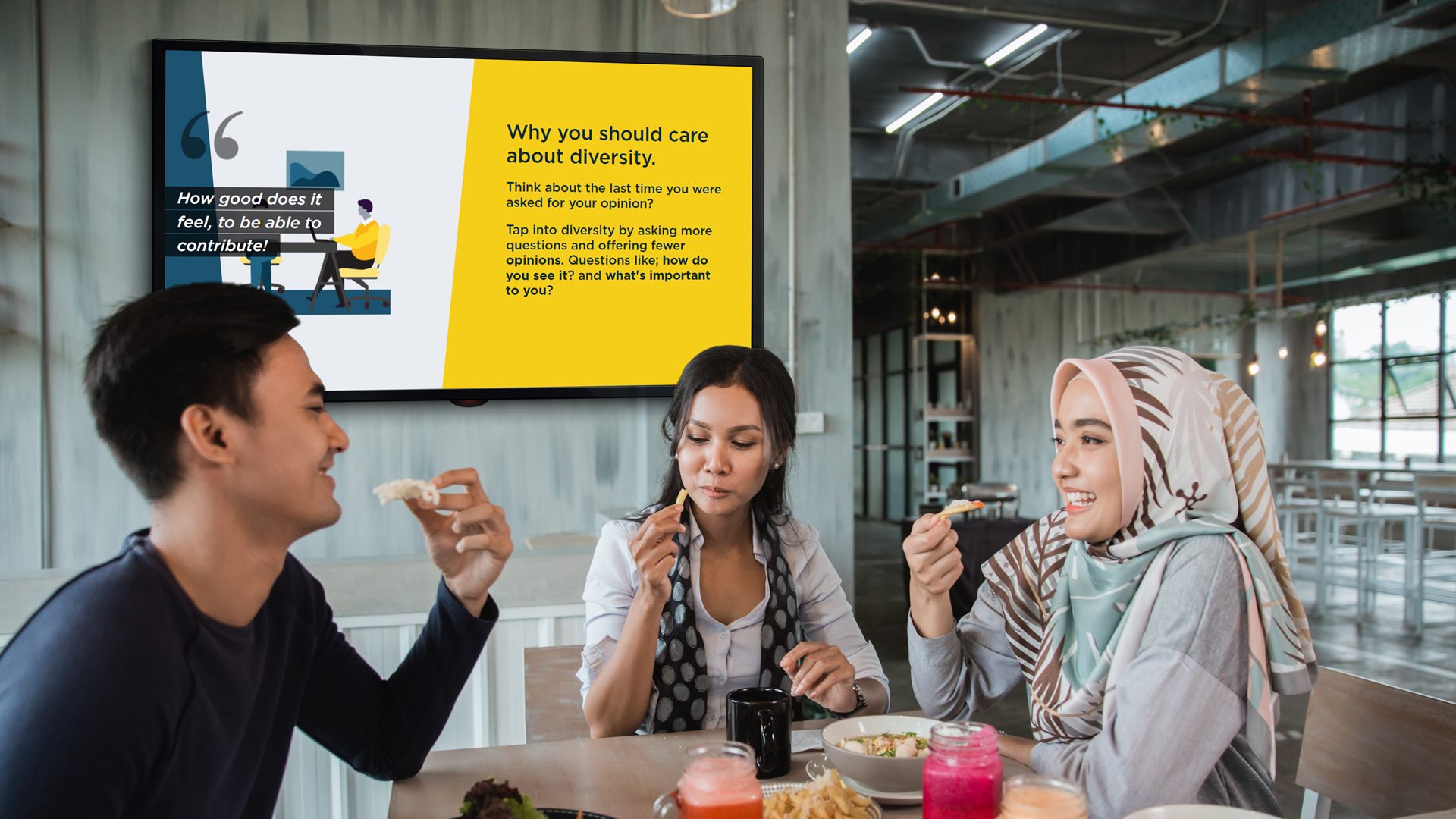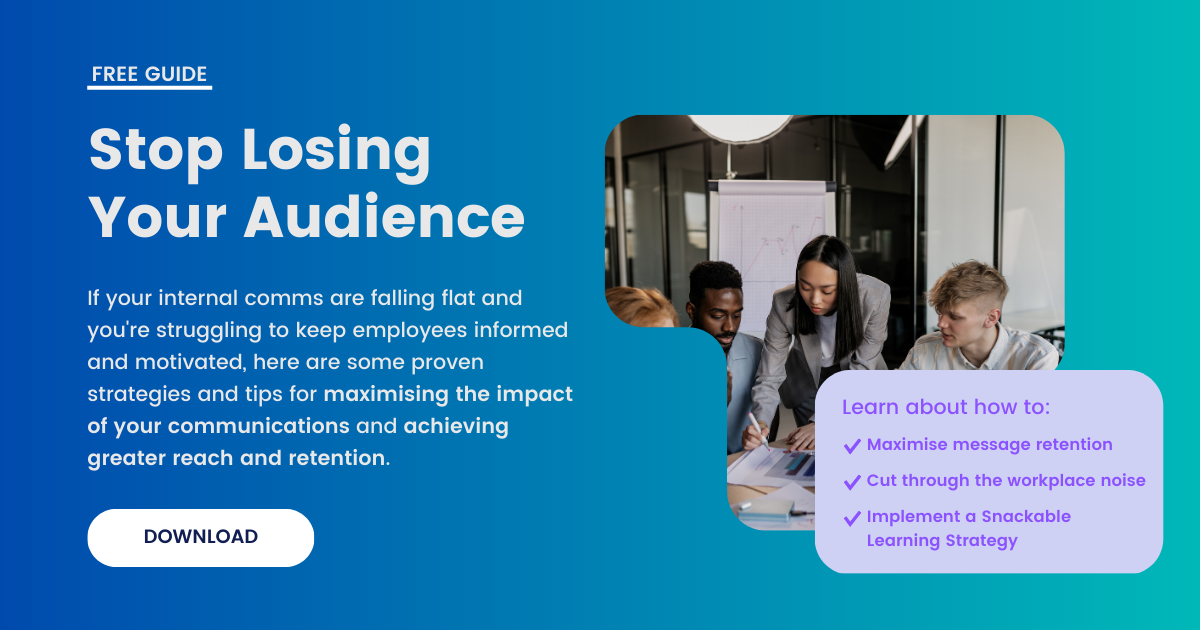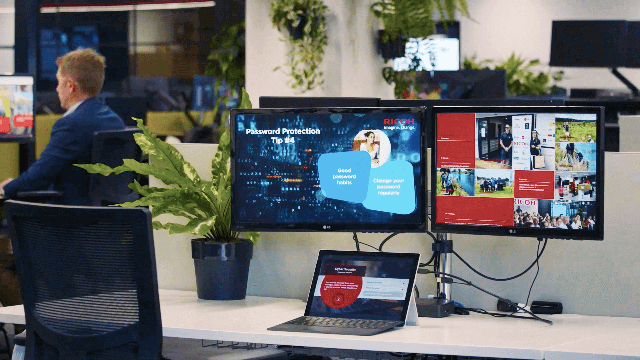
In today's workplace, Diversity, Equity, and Inclusion (DEI) is hotly discussed. More than a buzzword, DEI is a crucial concept in today's workplace and for good reason – an inclusive work environment leads to better performance, increased creativity, and happier employees. But as an internal communicator, it can be tough to effectively communicate about DEI. With over 42 million Google results on DEI communication, it's hard to know where to start!
Many internal communicators may not have a clear understanding of what these concepts mean, how to incorporate them into their communication strategies, or how to address sensitive topics related to DEI. That’s why we’ve put together this article – to give you a starting point for understanding the basics of DEI in the workplace, your role in communicating about DEI, and most importantly, 5 tips on how to effectively communicate about DEI.
Whether you're just starting on your DEI journey or you're looking to enhance your existing approach, these tips offer valuable guidance to help you promote a more inclusive and diverse workplace culture.
In this article, we’ll explore:
- What diversity, equity and inclusion (DEI) means at work and why it matters
- How internal comms can work with your DEI team to shape key messages
- 5 Dos and Don’ts for communicating about DEI at work
- Which communication channels should you be using?
What does diversity, equity, and inclusion (DEI) mean at work?
Diversity, equity, and inclusion at work refers to any policy or practice designed to make people of various backgrounds feel welcome and supported in the workplace.
- Diversity refers to who is represented in the workforce. Some examples of diversity in the workplace can include gender, age, ethnicity, sexual orientation, physical ability, and neurodiversity.
- Equity refers to fair treatment for all people so that identity is not predictive of opportunities or workplace outcomes. Equity takes into account the fact that not everybody is starting at the same level, and requires employers recognise barriers and advantages.
- Inclusion is the practice of making people feel a sense of belonging at work. This means every employee feels comfortable and supported by their employers when it comes to being their authentic selves at work.
Diversity, equity, and inclusion are three different but interconnected concepts. In combination, diversity, equity and inclusion in the workplace is an ethos that recognises the value of differences in the workplace. Together, they create an environment of respect and fairness.
Why is diversity, equity, and inclusion important in the workplace?
DEI is vital to creating and maintaining a successful workplace. Aside from the moral or ethical case for DEI helping build a fair society where everyone has equal opportunities, there are several good business reasons why organisations should pay attention to DEI:
DEI issues matter to employees and candidates
Simply put, people want to work in diverse organisations. Glassdoor found that 3 out of 4 jobseekers and employees say a diverse workforce is an important factor when evaluating companies and job offers.
Looking into the future workforce, Gen Z is the most diverse generation yet. This diversity also translates to the workplace – in a study by Monster, 83% of Gen Zs stated an employer’s commitment to diversity and inclusion is significant when choosing where to work.
“A diverse mix of voices leads to better discussions, decisions, and outcomes for everyone.” Sundar Pichai
DEI initiatives make business sense
There is a clear relationship between diversity and business performance.
- Organisations with gender-diverse C-suite are 25% more likely to have above average profitability
- The greater the representation of gender diversity, the higher the likelihood of outperformance
How to work collaboratively with your DEI team to shape key messages
Your workplace will no doubt, already have some DEI practices in place and there will be several teams/stakeholders responsible for pushing the DEI agenda forward.
In most organisations, DEI is championed by the leadership team and supported by the human resources or people and culture department. There may also be a number of employee interest groups (EIGs) driving different activities and events. As an internal comms specialist, the key messages that shape up your DEI communications need to reflect the aspirations, needs and perspectives of all these different stakeholders.
.jpg)
Internal communicators will work with many stakeholders to shape DEI communications
What role do internal communicators play in communicating DEI?
According to a 2023 Gallagher report, DEI is the second most frequently communicated topic in organisations. The role of internal communication specialists is to work collaboratively with the DEI specialists and other stakeholders in your organisation charged with moving DEI forward, to inform, educate, and support all employees to grow their own understanding of what DEI means, and keep everyone briefed on progress against objectives.
How to talk about diversity, equity, and inclusion in the workplace
It’s important to know that authentically communicating about diversity, equity and inclusion involves a cultural shift and commitment from every level of your organisation.
Your organisation is probably not starting from scratch and there may already have been a level of internal comms and messaging that has gone out, highlighting what has already been achieved. It’s important that you take a coordinated approach and consider the historical context as well as the stated aspirations of the leadership team for the future.
Here are five tips on what to do when communicating about diversity, equity and inclusion.
#1 Make sure you understand the bigger picture and take a collaborative approach
Do the groundwork to understand where your organisation is at with DEI, what progress has already been achieved and what is planned for the future. You can do this by reviewing the external messaging on your career site, reading through existing policies or strategic plans pertaining to DEI, and speaking to those responsible for driving the DEI agenda.
Find out what achievements or milestones have already been achieved, what messaging (internal and external) has already gone out and what the key goals are for each group. Taking a co-ordinated approach means that you don’t miss anything, and no one is left out.
#2 Be authentic and intentional
It only takes a few minutes to post on the company LinkedIn, but to be genuine about DEI efforts, you must understand the meaning behind the point you are making.
Ensure that your messaging is authentic and reflects the ‘felt experience’ of employees inside the organisation.
DEI messaging is only as valuable as it is authentic – and people can tell! When a company truly believes and supports what they are saying, it will be shown through their actions and how they treat their workforce. Communicating about DEI is effective when it is sincere and fully integrated into the overall vision for your organisation and approach to your work. This means all leaders understand the importance and value of DEI and champion this value internally and with stakeholders externally.
Have a clear purpose for DEI activities and articulate it: is it to promote an event? Produce educational material? Create culture change? Whatever your goal, be clear about the key messages and the target audience. It is okay to include aspirational messages about DEI – what you are aiming for in the future, but this needs to be balanced by messaging that reflects what has already been achieved and the areas that need more work.
#3 Set guidelines for communication
Consider the sensitivity around words and images that relate to culture, race, gender, and more. Don’t use tokenistic images to promote your ideas and ensure you get permission before using any existing images or material.
Ensure that you use appropriate language, that your messaging is culturally appropriate and that the messaging reaches everyone in the organisation. You may need to play a role in supporting leaders to shape up their DEI messages to ensure that they understand the guidelines. This is where a style guide will come in handy.
#4 Engage all key stakeholders
DEI benefits everyone, so it’s important to reach everyone with your messaging, including external stakeholders. This may include employees, job seekers, shareholders, customers and suppliers. How often and when you communicate will depend on factors such as their level of interest, understanding and desire to learn more.
Consider using different communication channels so that everyone’s needs are catered to, for example company careers site, intranet, digital signage screens, proposals, induction material and annual reports.
#5 Invite and listen to feedback
Developing a comms framework for DEI in your organization can feel like an overwhelming and sometimes frustrating effort, but don’t try and do it alone. There are many stakeholders in your organisation who have a vested interest in promoting DEI. Get their help, ask for their advice and invite everyone to give their feedback.
Is there too much information, not enough, not the right kind? Data and insights gathered from employee feedback can help evaluate and prioritise DEI initiatives, hold teams accountable for their participation, encourage transparent and frequent communication around DEI initiatives.
If you want your workforce to feel included in the decision-making, and invested in DEI efforts, share how their feedback has shaped events.
For internal communicators and DEI teams, this means sharing what you’ve learnt from the comments, and what measures you’ve taken since (or
will take) to address concerns.

Digital signage shares DEI messages effectively and efficiently
How to use smart communication channels to share DEI messages
One of the key factors in achieving that objective is how effectively and frequently leaders communicate their DEI goals and progress to all employees throughout the organization. However, a recent study found that despite more than half of employers reporting that they share DEI updates through company-wide channels, less than 25% of employees report this happening within their organisation.
Clearly the messages are getting lost somewhere along the line. In today’s dispersed workforce, it can be challenging to ensure that everyone stays informed. The rule is to communicate often and widely, to as many stakeholders as possible.
Digital signage screens
One way to ensure that your DEI messages are reaching everyone is to make use of digital screens across your workplace. Digital signage screens are a great medium for keeping high-value communications front of mind. They drive action and influence behaviours without contributing to information overload. Some DEI content ideas which work well on digital screens include:
- Sharing corporate values
- Showcasing employee stories
- Outlining DEI policies and plans
- A calendar of upcoming DEI events
To get the most out of your digital signage screens, it must show dynamic, visual content to capture attention. The messages must be snackable to hold attention. To help your workforce remember your messages, you can’t have content showing on repeat – that’s a sure-fire way to turn it into background noise! Instead, have your messages delivered using spaced repetition to maximise message retention.
Screensavers and default web browser home page
No matter which web browser your organisation uses, you can set the home page to show internal messages; you can also make use of screensavers to amplify DEI messages. Some content ideas include:
- Direct to a specific intranet page
- Photo montage of DEI employee interest groups (EIG’s)
- Updates on DEI initiatives
- Spotlight helpful resources
Company intranet
The company intranet is great for sharing organisation-wide happenings, but the drawback is that it can be difficult for employees to navigate to the exact page they’re after. Internal communicators could encourage employees to post on the corporate blog and use message boards to encourage transparency and honesty.
Communication apps
Apps like Slack and Teams encourage staff members to develop and improve working relationships. Most workplace communication apps will allow you to create channels where you can share specific DEI messages, organise meetings, post polls, surveys and more. Communication apps are good for fostering two-way dialogue, but messages can get lost amid all the other notifications and pop ups.
Newsletters
Whether it’s a physical newsletter or a digital newsletter, dedicate space to spotlight DEI in your workforce and keep the workforce up to date on the latest outcomes of DEI and upcoming initiatives. Maybe you can feature working mums to tie back into your paternity leave scheme; share senior workers and their career pathways; spotlight Te Reo champions during Te Wiki O Te Reo Māori. The drawback is that this is another channel that could be contributing to noise and therefore ignored.

How do you get started communicating about DEI?
It can be really overwhelming with so much information out there. You can’t communicate what you don’t have, so if your organisation is at the beginning of their DEI journey, consider starting with a DEI Review, run by experts like Diversitas. This will give you a baseline understanding of where your organisation is at and identify your aspirations when it comes to DEI progress.
Even if you already have a DEI plan in place and are working towards specific DEI goals, communication needs to be ongoing and targeted. Ensuring that DEI messaging is continuously highlighted to embed change in behaviours and attitudes is crucial. The aim is to keep DEI front-of-mind and ensure that everyone is kept up to speed on developments and progress.
Relying on outdated, hard to reach channels, can turn DEI messaging into background noise for many. This is where a DEI program on your broadcast channels (think digital signage and screensavers) really shines. Thanks to spaced repetition, it ticks all the boxes: dynamic and engaging snackable content served to your entire workforce consistently without getting stale. Your workforce needs ongoing communications that reinforces the right behaviours and builds their skills and competency in inclusive behaviours.
If you need help getting cut through with your DEI initiatives, our communications experts are here to get you on the right track.
.png)

